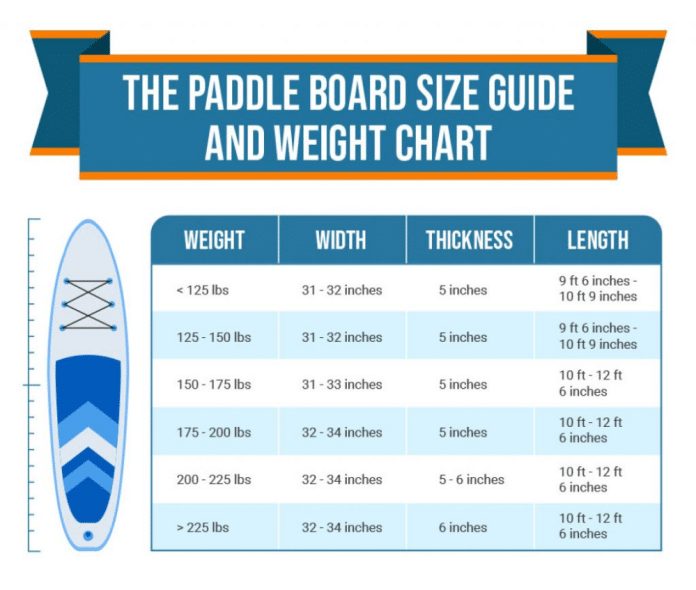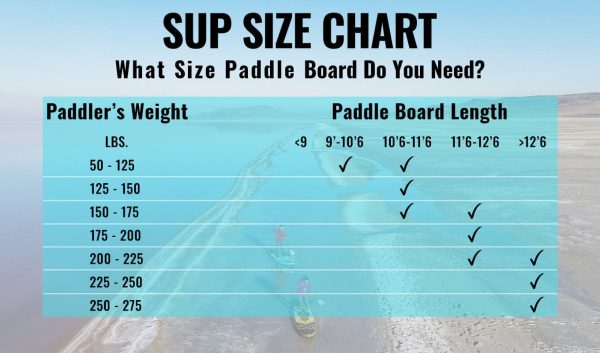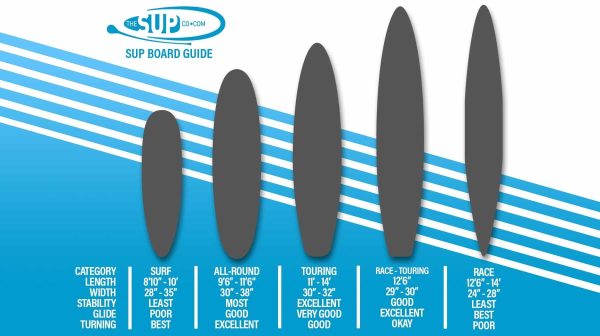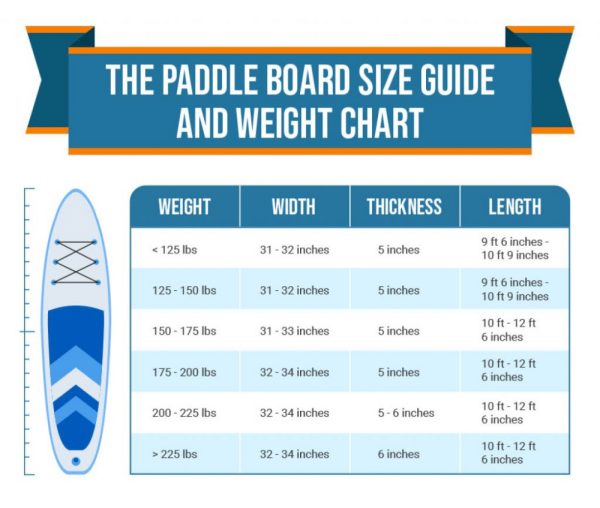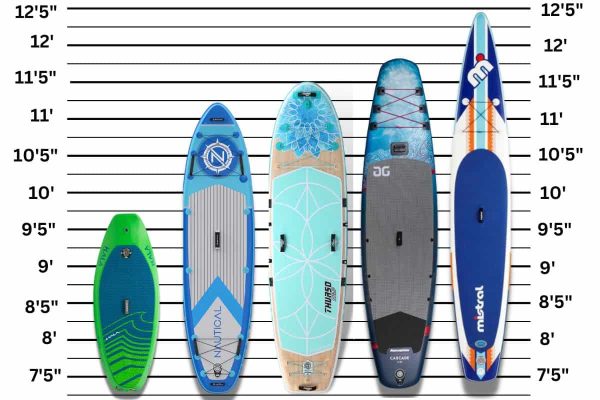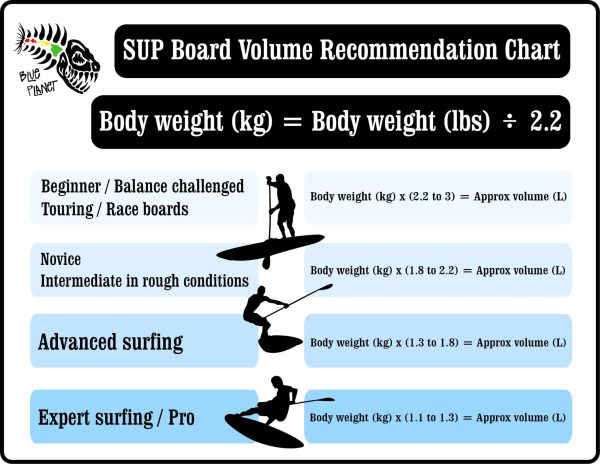Ready to hit the water with a stand-up paddleboard (SUP) but unsure what size to choose? Look no further!
In this article, we’ll guide you through the process of determining your ideal SUP size so you can make the most out of your paddling adventures.
Whether you’re a beginner or a seasoned pro, finding the right size paddleboard is crucial for a comfortable and enjoyable experience.
So, let’s jump right in and discover how to find your perfect SUP fit!
Factors to Consider
When it comes to choosing the right stand-up paddleboard (SUP) size, there are several important factors to consider. These factors include your paddle boarding experience, body weight, height, the types of activities you plan to do with your SUP, and your skill level. Considering these factors will ensure that you select a board that is ideally suited to your needs and abilities.
The Role of Paddle Boarding Experience
Before diving into the specifics of choosing the right SUP size, it is essential to consider your paddle-boarding experience. Whether you are a beginner, intermediate, or advanced paddleboarder can significantly influence the type of board you should opt for.
Beginners
Choosing a board that offers ample stability and buoyancy is crucial for beginners just starting their paddle-boarding journey. A more comprehensive and longer board will help you maintain balance and gain confidence on the water. Additionally, beginners should look for boards with rounded noses and broader tails, as these features enhance stability and prevent the board from tipping.
Intermediate
Intermediate paddleboarders have developed a basic understanding of paddle-boarding techniques and are looking to enhance their skills. As an intermediate paddler, you can consider a slightly narrower and shorter board, as you will have developed better balance and control. This type of board will allow you to maneuver more efficiently and progress in your skills.
Advanced
Advanced paddleboarders who have mastered their skills and are looking for a high-performance board can opt for narrower and shorter boards. These boards offer enhanced speed and maneuverability, perfect for challenging conditions and advanced paddle boarding techniques.
Determining Body Weight
Another critical factor in determining the right SUP size is your body weight. Considering your weight will help ensure that your board is able to support you adequately on the water. Here are a few aspects to consider when accounting for body weight.
Weight Range Guidelines
SUP manufacturers often provide weight range guidelines for their boards. These guidelines suggest the appropriate range of body weight that a particular board can accommodate efficiently. It is essential to stay within these weight ranges to ensure optimal performance and stability.
Weight Capacity of the SUP
In addition to the weight range guidelines, it is essential to consider the SUP’s weight capacity. The weight capacity refers to the maximum load the board can bear while maintaining stability and performance. Selecting a board with a weight capacity that comfortably exceeds your body weight will ensure that the board remains buoyant and stable throughout your paddle boarding sessions.
Equipment and Gear Loaded on the Board
Consider the additional equipment and gear you will be carrying on your SUP. If you plan on bringing along a lot of gear, such as coolers, backpacks, or fishing equipment, it is necessary to account for the added weight when choosing your board size. Be sure to select a board that can handle the combined weight of both your body and any gear you will be taking with you on the water.
Consideration of Height
Your height is another essential factor to consider when determining the ideal SUP size. Matching your board’s length to your height will directly impact your comfort and stability on the water.
Ideal Board Length for Your Height
As a general rule, taller individuals should opt for longer boards, while shorter individuals should choose shorter boards. Longer boards provide enhanced stability and are suitable for taller individuals, as they distribute the weight more evenly. On the other hand, shorter boards are easier to maneuver and control and are ideal for individuals of shorter stature.
Physical Ability and Stability
While taking height into consideration, it is also essential to assess your physical ability and stability. Individuals with more significant physical fitness and better balance may find handling shorter boards, even taller ones, easier. Conversely, individuals who have stability challenges or need additional support may prefer longer boards for added balance and security.
Types of SUP Activities
The type of activities you plan to engage in with your SUP is another vital factor in deciding the right board size. Different activities require different features and dimensions to optimize performance and enjoyment.
Surfing
If you plan on using your SUP primarily for surfing, you will want a shorter board with a narrower nose and tail. These characteristics allow for better maneuverability and responsiveness in the waves. A surf SUP typically has a more rocker-shaped hull to enhance maneuverability and prevent catching the nose while riding waves.
Touring
A longer and narrower board is recommended for those interested in long-distance touring or exploring various waterways. These boards glide through the water more efficiently and are designed to cover greater distances. Look for a board with a displacement hull, as it tracks well and minimizes resistance, allowing for a smoother and faster paddling experience.
Yoga/Fitness
SUP yoga and fitness enthusiasts should opt for broader, more stable boards to accommodate the different yoga poses and exercises performed on the water. Stability is crucial when engaging in these activities, allowing for greater confidence and balance. Look for boards with soft deck pads or built-in yoga mats for added comfort.
Racing
Racing boards are specifically designed for speed and agility. These boards are longer, narrower, and have a displacement hull to reduce drag. If you plan to participate in SUP races or want a board that allows you to paddle at high speeds, choose a racing-specific SUP that matches your skill level and experience.
Fishing
When it comes to fishing, stability and ample space for gear are key. Look for broader and more stable boards with features like deck mounts for attaching fishing accessories and elevated seating options. A board with a good weight capacity and space for storing gear will provide an optimal fishing experience.
Skill Level and Board Size
Your skill level is a crucial factor when choosing the right SUP size. The size of the board directly affects stability, maneuverability, and speed – essential aspects of your paddle-boarding experience.
Stability
Beginners and individuals who value stability above all else should opt for wider boards. A wider board offers enhanced stability, making it easier to maintain balance and find your paddle boarding rhythm. Choosing a board with a higher width-to-length ratio will provide maximum stability, especially for novice paddlers.
Maneuverability
If maneuverability is your priority, consider a shorter board with a narrower width. Shorter boards allow for quick turns and more straightforward navigation around obstacles. They are particularly suitable for individuals with experience who are looking to engage in more dynamic paddle boarding activities such as surfing or river running.
Speed
When speed is essential, longer and narrower boards are your best option. Longer boards slice through the water more efficiently, allowing for faster paddling speeds. The narrower width also reduces drag and resistance, further enhancing speed. However, keep in mind that narrower boards may sacrifice some stability, so consider your skill level and comfort level before opting for a high-speed board.
Understanding Board Volume
Board volume is a crucial factor that directly impacts the performance and buoyancy of a SUP. Understanding board volume and its relationship to your skill level is critical when selecting the right SUP size.
Importance of Board Volume
Board volume refers to the amount of space a board displaces in the water. Higher volume provides greater buoyancy, making staying afloat and maintaining stability easier. The more volume a board has, the more weight it can support. Conversely, a lower-volume board may feel less stable and unsuitable for heavier individuals or those with less experience.
Volume Recommendation based on Skill Level
As a general guideline, beginners should opt for boards with higher volume, as they provide better stability and buoyancy. Intermediate paddlers can consider boards with slightly lower volume, depending on their skill progression and body weight. Advanced paddlers with excellent balance and skill can choose boards with lower volume, as they require less stability support and are designed for more dynamic paddling.
Weight Chart for Volume Suggestion
For a more accurate recommendation on board volume based on your weight and skill level, refer to weight charts provided by SUP manufacturers. These charts offer specific ranges of board volume to assist you in selecting the right board size for your body weight and skill level. Following these recommendations will ensure that you have the appropriate amount of paddle power and stability while out on the water.
Trying Out Different SUPs
Nothing beats trying out different boards firsthand when choosing the right SUP size. Here are a few options for trying out and experiencing various SUPs before making your final decision.
Demo Days and Rentals
Many paddle board manufacturers organize demo days or events where you can try out different SUP models and sizes. This hands-on experience allows you to paddle on different boards and get a feel for their size, stability, and overall performance. Additionally, renting SUPs from local shops or beachside rental services is an excellent way to try out different boards over extended periods and in various conditions.
Attending SUP Clinics or Events
SUP clinics and events often allow participants to test different board sizes and styles. These events offer the chance to learn from professionals and gain valuable insights while trying out a variety of SUPs. Attending clinics and events not only exposes you to different board sizes but also allows you to interact with experienced paddlers who can provide guidance and advice tailored to your needs.
Borrowing from Friends or Local Clubs
If you have friends or acquaintances who own SUPs, don’t hesitate to reach out and ask if you can borrow their boards for a short period. Borrowing a board from someone you know or joining a local paddleboarding club can provide you with an array of options to experiment with different SUP sizes and styles. This hands-on experience lets you make more informed decisions when selecting your board.
Seeking Expert Advice
If you are unsure which SUP size is right for you or need additional guidance, it’s always beneficial to seek expert advice. Here are a few avenues to gain insights from knowledgeable individuals.
Consulting a SUP Retailer
Paddleboard retailers have extensive knowledge of different SUP models and sizes. They can assess your needs, considering your height, weight, skill level, and intended use, and recommend the most suitable board size for you. Visiting a SUP retailer and discussing your requirements with their experienced staff can help you make an informed decision and select an appropriate board size.
Online Resources and Forums
The internet is a vast resource for SUP information. Online forums and communities dedicated to paddleboarding provide opportunities to engage with experienced enthusiasts and seek advice. By participating in these forums, you can gain insights from paddlers with similar physique, skill level, and interests, helping you narrow down your options and find the right SUP size for you.
Final Considerations
While the technical aspects of choosing the right SUP size are essential, there are a few more factors to consider before making your final decision.
Evaluating Your Personal Preferences
When selecting a SUP size, it’s essential to consider your personal preferences. Think about the type of experience you want to have on the water and what features are most important to you. Do you value stability over speed? Are you looking for a board that can handle multiple activities? Understanding your preferences will help guide your decision-making process and ensure that you choose a board that aligns with your personal goals.
Budget
Your budget is another crucial factor to consider when selecting a board size. SUP prices vary significantly depending on the size, materials, and brand. Determine a budget range that suits your financial situation and explore options within that range. Remember that investing in a high-quality board that matches your specific needs is a long-term investment that will enhance your paddle-boarding experience.
Storage and Transportation
Lastly, consider the practical aspects of owning a SUP, such as storage and transportation. Larger boards may require more storage space at home, so assess the available storage options to ensure your board fits comfortably. Consider how you will transport your SUP to and from the water. Consider the size and weight of the board and whether you have appropriate means of transportation, such as roof racks or inflatable SUP options, to accommodate your chosen board size.
By taking into account all these factors – paddle boarding experience, body weight, height, types of activities, skill level, and seeking expert advice – you will be well-equipped to choose the right SUP size. Remember, selecting the right board size is a personal decision based on your unique needs and preferences. By doing your research and exploring different options, you’ll find the perfect SUP that will enhance your paddle boarding adventures for years to come.

